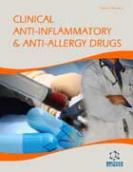Abstract
Chemotherapeutic agents have been shown to be useful adjuncts to daily oral home care in the control of plaque and gingivitis. This paper reviews the main agents used in periodontology as a mouth-rinse in regards to anti inflammatory effects and other vehicles to inhibit the growth of supragingival plaque. The agents discussed are chlorhexidine, cetylpyridinium chloride, essential oils, triclosan, delmopinol, salifluor, xylitol, ketorolac and natural products. There are several in vivo and in vitro studies that evaluated the specific properties of mouth-rinses considered along with their action mechanisms, side effects, safety and possible clinical usefulness. Most of the studies have reported that chlorhexidine gluconate or essential oils provide significant anti-plaque and anti-septic benefits whereas triclosan represents unique clinical effects on reducing inflammation in addition to inhibiting the dental plaque biofilm. Although the natural products appear to be promising in reducing plaque and gingival inflammation, data on clinical effects are sparse. Mechanical plaque control is the primary tool to prevent the progression of periodontal diseases, but adjunctive usage of anti-inflammatory mouth-rinses can be necessary for certain time periods for certain category of patients.
Keywords: Anti-inflammation, anti-gingivitis, anti-plaque, mouth-rinses, periodontal disease.
Graphical Abstract
 31
31

